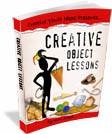Why Plan a Children’s Carnival instead of the Traditional Halloween Trick-or-Treat?
As the holiday of Halloween rolls around, many schools, churches and children’s organizations start planning their SAFE alternative options to the traditional “trick or treating” activity. This allows more control over what kids receive and also to avoid some of those members of society that might place unwanted items in candy or treats. It’s also a lot safer than having kids roam the neighborhoods. Some places throw a holiday dance or get together where others opt for such things as a youth and children’s carnival. This is a great way to show children a different way to celebrate and stay safe for the Halloween holiday or simply provide an alternative if you are opposed to the celebrations of halloween in the first place.
Tips for Planning Your Halloween Carnival or Harvest Festival Event.
If you are planning such a Halloween carnival or fall festival, you will want to plan a wide variety of games and activities to have at your children’s carnival that will keep the kids entertained. Below are some of the most popular types of activity booths and games for this type of carnival celebration. It is best to have a variety of choices for kids of all ages so that they will have plenty to choose from. When you plan your carnival, think about both boys and girls and what they like to do. Include activities that are good for younger children, activities that are for older children and activities that might even be fun for their parents as well.
Carnival Games:
- Baseball Strike Zone
This is a game that can be adjusted for all ages. Strike zone games are generally set up for older kids but you can adapt it for the little ones. You can make a ball throwing game (It doesn’t have to be baseballs) that stands up on its own using a cardboard box. You can often get large boxes from appliance and furniture stores. Simply cut holes in the cardboard and paint it to match your Halloween event theme. You can create a carved pumpkin image with a mouth and eyes as the strike zones, a full moon with different size craters, smiley faces, flowers and many other designs. The objective is to have the children throw the balls into the various holes. You can vary the size of the holes and the point awarded for each successful throw. Make your prize selection based on the amount of points the child gets with a total of 3 to 5 balls. - Fishing Games
This is something that is great for the little ones. You can do this with a large tub of water and some play fishing poles. You can get about 15 to 20 floating ducks or boats at a dollar store and paint a mark on the bottom of some of them. To make the game really simple, you can attach magnets to both the floating toys and the end of the fishing poles so that the children simply have to get the fishing pole string into the water and they will always pull up something. Those who pull up a toy with a mark on it are the winners. - Golfing Area
There are many discount stores that sell play golf sets. You can get a few of these and set up a mini golf course which is great fun for all ages. You can also have a putting area where golfers can test their luck at getting a hole in one. You can make the prizes based on where the person is standing when they get the ball in the hole.
Activity Booths
There are many activity booths for your carnival that you can make out of everyday items such as bottles, cans and fishbowls:
- Set up cans in a row and give your players balls to throw at the cans to knock them over. Fill them with sand as full cans are more difficult to knock over than empty ones.Set up plastic bottles like bowling pins and use a small ball to let your players see how many “pins” they can knock over with one try. Again, bottles filled with water or sand will be more difficult to knock over. Base your prizes on the number of cans or bottles knocked over.
- Use small fish bowls as a game by filling them each with a fish and water. Put paper plates on top of the fishbowls with a bull’s-eye drawn on them and et the players toss coins onto the plates to try to win a fish. You can also use small balls and let the players try to throw a ball into a bowl to win a fish.
- Use bottles and small rope rings as another game. Toss the ring over the bottle to win prizes.
- Place a slip of paper inside a balloons with a prize written on it then let the older children toss darts and try to pop a balloon to get the prize written on the slip of paper inside.
Unlimited possibilities for your Halloween / Fall Carnival
These are just a few examples of the large number of different types of games and activity booths that you can plan for your carnival; you just need to be creative. You will find that if you plan right, your carnival will be a huge success. Just remember to have games that are good for all ages as well as games set for certain ages. Spread things out as well so it makes the carnival seem that much bigger. Add in some food booths and drinks and you have got the makings for a great carnival that is not only fun but also safe for all the participants.
Looking for More Ideas for Halloween? Check out these other possibilities from the Creative Youth Ideas Website:
Halloween Bible Studies or Sermons
Some scripture passages that might make good Halloween Bible Study or sermon topics
Bobbing for Apples
Halloween Party Game: Bobbing for apples is a common Halloween tradition in which youth try to take a bite out of an apple floating in a tub of water.
The Mask I Wear
This Halloween mask related study encourages youth to take a look at the masks we wear everyday, not just on Halloween and to expose what is underneath to God so that he can transform us so that we reveal his glory! Makes a great study for a Halloween or fall festival event.
Halloween Bowling Party
Thinking of a youth bowling party? Here’s a way to have fun while making it less dependent on skill. Great youth idea for Halloween as well!
Halloween Party or Fall Festival
Make your harvest Festival (alternative to a Halloween Party) a harvest of souls into the Kingdom of God!
Sleepy Hollow
While you may not lose your head playing this game, the head to head play is wild and fun!
Harvest Festival Games
Two games you can use at your next harvest festival or Halloween alternative event.
Pumpkin Picasso
How well can you draw the Halloween Jack-o-Lantern? What roles do a clear vision and clear instructions play in accomplishing our goals and objectives in life?
Candy Toss
Just for fun. Toss the candy into a Halloween Jack-o-lantern pumpkin and if it lands inside, you get to keep it!
Pumpkin Patch Relay
In this relay, participants will try to replace the missing pieces that have been removed from their team’s pumpkin. It can be used as party game for your October 31st Halloween alternative, for a harvest festival, or a Halloween carnival.
The Mummy
Use this game about a mummy as part of Halloween Alternative or as an introduction to the story of Lazarus.
Skeleton Race
Even if you don’t want to be involved with Halloween, you’ll want to grab at least one of those plastic or paper Halloween skeletons for this object lesson / game.
Jack-O-Lantern
Use the legend of the Jack-o-lantern to share the gospel.
A Halloween Message
A possible salvation message for a fall festival or event to replace Halloween.
Fall or Harvest Festival?
Do you have a fall festival?
Halloween Alternatives for Christians?
Looking for Halloween Alternatives? Check these out! You’ll find games and activities, many of which have an evangelistic message.
Firsts and Lasts
Our lives are often defined by the firsts and lasts which affect everything in between. What are your spiritual firsts and Lasts which define your spiritual life?
Hollywood Squares Game
This game, based on the television show “Hollywood Squares” makes a great review activity after a lesson series has been taught! You can also use it with trivia questions and modern events as a fun activity for a game night or outreach activity!
Cupcake Faith
Use this creative object lesson as a surprising illustration to kids that God looks at our heart, not our appearances. It can be used on any occasion or as a children’s sermon, but with a reference to tombs, and masks it also serves as a fun lesson for an alternative to Halloween.
Strategies to Confuse Trick or Treaters
Halloween humor
Candy
Youth will take part in a learning simulation experiencing what it is like when gifts are not appropriately utilized as a blessing to all members of the body of Christ. Makes a great activity for a Halloween Alternative or for a creative Bible Study lesson.
Pumpkin Puzzles
Youth will cut up pumpkins and then try to put a cut up pumpkin back together again. The game can be used as an object lesson illustrating God’s restoration of our lives.
A Christian Response to Halloween?
Can and should Christians provide alternatives to Halloween with the purpose of reaching youths for Christ?
Trick or Treat Relay Game
As a Halloween alternative, use this messy game based upon the common Halloween chant : “Trick-or-treat, smell my feet, give me something good to eat” to teach youth about the tricks of the evil one.
Pumpkin Prayer
Object Lesson on Prayer using a pumpkin
Peter Pumpkin
Has your light gone out because of sin in your life?
Perky the Orange Pumpkin
Lesson on self-identity using a children’s story about a colorful pumpkin
Jack O’ Lantern
Create a Halloween lantern with stars for eyes, the Christian fish symbol for a mouth, and a cross for its nose. Then pass out a poem to spread the gospel message.
Pumpkin Seed Toss
Use this game as a discussion about the power of our words, or about how we choose goals in life.
Pass the Brains
Play “pass the parcel” with a pumpkin
Like A Halloween Pumpkin
Use a pumpkin to share the gospel.
Masks
What are the masks we wear?
Fear Factors
Discuss dealing with fears as a halloween alternative.
Noah’s Ark Party
Redeem Halloween with a Noah’s Ark Party and discuss the promises of God.
Candy Relay
Redeem Halloween by using this “Trick or Treat” Candy game to share the gospel
Pumpkin Bowling
Use vegetables for a wild bowling variation.
The Pumpkin
Life as a pumpkin!

Holiday Collection
Games and Activities in Celebration of common Holidays.
Creative Holiday Ideas has over 300 pages of ideas to help you plan your next Halloween event or Fall Festival, as well as a variety of other familiar holidays. If you’ve ever wondered what you’re going to do for all the minor, but common holidays and how you’re going to do it, this resource is for you.
=> Tell me more about the Holiday Collection





